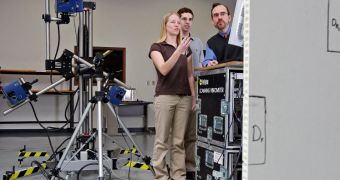Scientists from a group of universities in the United States are currently working on developing a new technology for identifying bombs and improvised explosive materials inside shielding materials.
The method would ensure that even components that are very carefully hidden could be detected by using sound and radio waves. Experts at Purdue University are also participating in the work.
The research initiative is being conducted by experts at the North Carolina State University (NC State), and the entire program is part of a $7 million Multi-University Research Initiative (MURI).
As part of the project, the team at Purdue will be alloted around $2 million over the next five years.
The main goal of the new detection method will be to develop a method of combining radio and sound waves in such a manner that, when they bounce back from a target material, they produce new type of waves.
The latter could be used to identify materials inside the bags, and determine which of them pose a threat. Having this ability could be very useful in the fight against terrorism.
In addition, the US researchers also hope to make their technology function in real-time, by developing incredibly complex mathematical equations and computational models.
“You want to get energy into the material, have it move around to pick up information and then be reradiated so that we can sense what's inside,” explains expert Douglas Adams.
He is the Kenninger professor of mechanical engineering at Purdue. “Most materials are relatively linear, meaning they respond in an easily predictable way when excited by low-amplitude waves,” he adds.
“But with high-amplitude waves, material behavior is much more complicated, or nonlinear, so we can't use the same mathematical equations and models to describe how the waves propagate inside the materials,” the scientist goes on to say.
Adams is the leader of the Purdue section of the experiments. The entire project will be conducted NC State Department of Electrical and Computer Engineering Lampe Distinguished Professor, Michael B Steer.
The actual work will be carried out at the Herrick Laboratories, the Center for Systems Integrity and Birck Nanotechnology Center.
The new technology will not be made available right away. At least five to ten years are needed before the method could be employed in airports, at a large scale.

 14 DAY TRIAL //
14 DAY TRIAL //